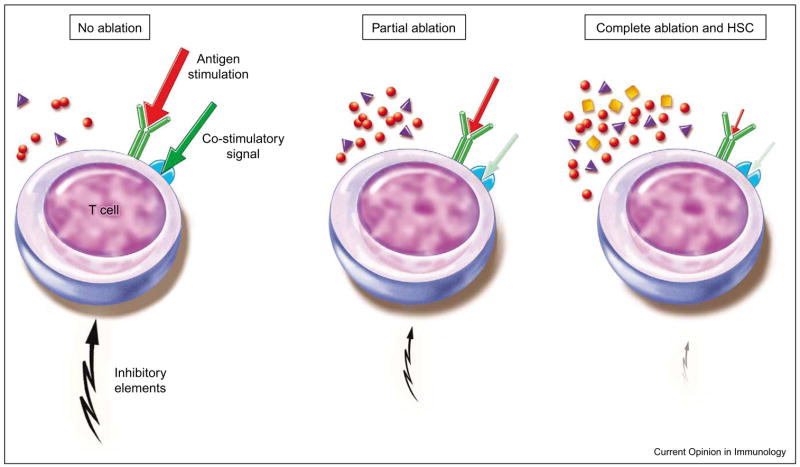Figure 1.
In a lymphoreplete host, low basal cytokine levels and strong inhibitory elements are present. Therefore, strong antigen stimulation combined with a co-stimulatory signal is needed to activate T cells. Partial ablation reduces regulatory elements as well as other cytokine consuming host cells and leads to elevated cytokine levels. Low affinity antigens are sufficient to induce T-cell activation even with weaker co-stimulatory signals. In complete ablation with hematopoietic stem cell (HSC) transplants, host cells are further diminished and additional factors are released or induced by, for example, HSCs, cytokine levels are presumably even more elevated. Therefore, the need for co-stimulatory signals and T-cell receptor stimulation might be further reduced.

